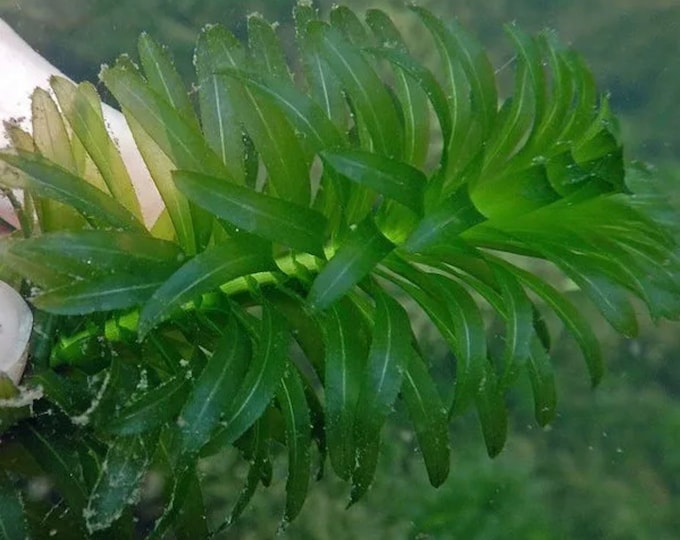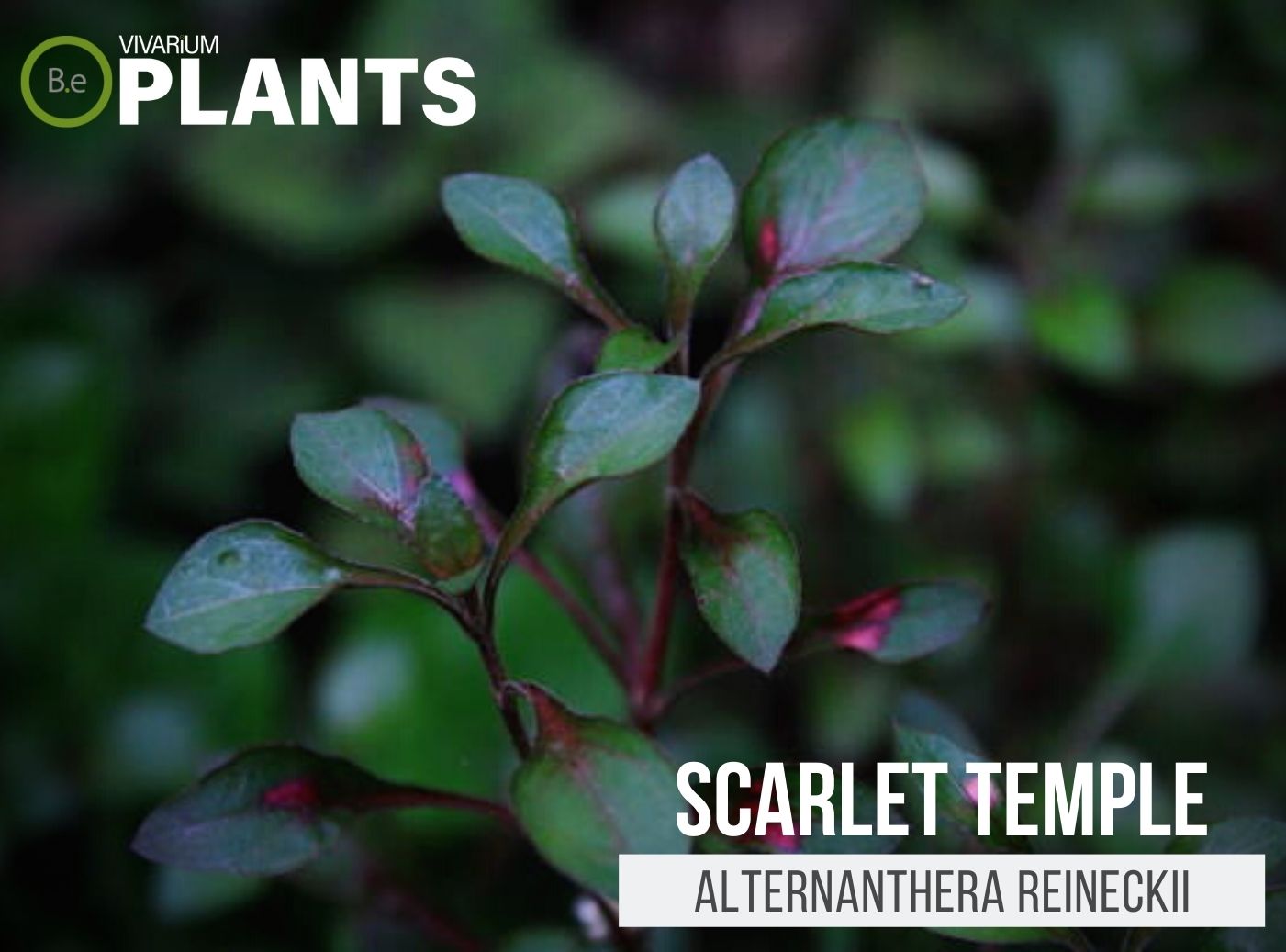Egeria densa, commonly referred to as Anacharis or Brazilian Waterweed, is a great aquatic stem plant to have in an enclosure with fish or other aquatic life.
This versatile rooted plant is a fast grower and can be used for a variety of purposes; a substrate for hiding places, an anchor for moss, and an oxygenating plant for aquariums.
It’s an excellent beginner plant to have but might require more maintenance than other more hardy plants.
Table Of Contents:
ToggleQuick Stats:
Scientific Name: Egeria densa
Family: Hydrocharitaceae
Common Names: Anacharis, Brazilian Waterweed
Habitat: Aquatic
Height: Up to 3 ft.
pH Range: 6.0 to 8.0
Temperature: 55°F to 80°F
What Is Anacharis?
Egeria densa is a species of aquatic plant in the family Hydrocharitaceae.
This plant is a submerged aquatic perennial that grows in stems with whorled green leaves and tends to form dense stems that resemble an underwater forest, hence its nickname Anacharis.
The stems of this plant can grow to a depth of 3 feet, making it a great tall background plant.


Anacharis Facts
This plant is a popular choice for aquariums and provides plenty of surface for nitrifying bacteria to colonize, which helps to keep your water clean.
In tanks, this plant will grow like a wild, so it may need to be trimmed more regularly than other vivarium plants.
It’s a great nutrient scavenger and will help to reduce phosphate and nitrate levels in your tank. It’s also an excellent source of oxygen production, making it an essential addition to any aquarium.
Description
Egeria densa has long, slender leaves that grow in an alternating pattern along its stems, which can range anywhere from a few inches to a few feet in length.
This plant has a dense growth habit, so when it’s placed together in groups, it can create a beautiful backdrop that resembles underwater forests.
The leaves can grow to be up to 1 ½ inches wide and are bright green in color with wavy edges.
Habitat
Egeria densa is native to South America and grows in slow-moving streams and ponds. It does best in a wide range of water temperatures but prefers temperatures between 62°F and 73°F.
The water must be clean and free of pollutants in order for it to thrive. It’s also important to note that this plant cannot survive in temperatures that dip below 55°F.
pH Preference
The pH should range from 6.0 to 8.0 for this plant to thrive.
This plant does best in a stable pH and any changes should be made slowly so that it can slowly adjust.
If it’s exposed to unstable pH levels, it can become weaker and less resistant to diseases or pests.
Vivarium Type
Anacharis is quite an easy-going species. With that in mind, it will not be too complicated when choosing the type of enclosure it is grown in. It is best to try and replicate the plant’s natural habitat as much as possible.
Doing so will make it easier to provide this foliage plant with its basic needs. The proper setup and theme of the enclosure will make a big difference to the overall look and health of the plant. Be sure to choose setups that are moist and high in humidity.
Here are recommended vivariums it will do well in:
-
- Paludariums – Half aquatic/ half terrain-based enclosure.
- Ripariums – Mostly aquatic-based enclosures with some terrain features present.
- Aquariums – Fully aquatic-based enclosure with little to no dry terrain.
Vivarium Placement
Egeria densa is an aquatic plant and should be placed in the background or midground of the tank.
It will require a lot of light, but it should not be too intense, as this can damage the plant.
This plant can be anchored down or weighted down with rocks to keep it in place.
Substrate
Since this is an aquatic plant, it requires an aquatic substrate that’s rich in tin and iron, both important nutrients for the plant’s growth.
Substrate for a planted tank can also be made up of gravel, rocks, and sand, but no more than three inches should be used.
It’s important to keep the substrate clean and free of any pollutants or debris.
Lighting
Egeria densa does well in moderate to bright aquatic lighting. Higher lighting intensities are preferred for deeper tanks, where they can reach up to five watts per gallon.
For shallower tanks, the lighting should be around three watts per gallon.
This plant does not require any additional supplements beyond the basic lighting spectrum, but if there is too much light, it can damage the plant.
Buy Anacharis
When buying Anacharis, there are a few things to keep in mind. Making sure the plant is healthy when purchased is essential for its success in a vivarium or pond. Vegetation that is already in poor conditions will have a very hard time adjusting to new environments.
Click the image below to learn more about the current price and other relative info about this plant.
Anacharis Care & Propagation
Egeria densa is a great option for maintenance, as it requires very little in terms of upkeep. This type of plant requires regular trimming and pruning to keep it looking its best.
When trimming, it’s important to make sure the roots are not harmed or disturbed.
How To Grow
Egeria densa can be propagated easily through cuttings and by dividing existing plants. To propagate through cuttings, simply trim a section of the plant with a sharp knife and place the cutting in a container filled with nutrient-rich substrate.
To divide an existing plant, use a sharp knife to cut the root system in two and replant each half in a different container.
Water Requirements
This plant requires clean and healthy water at all times, and the water should be changed regularly to keep the water clean.
Water temperature should be between 65°F and 70°F and should be tested regularly to ensure that it’s within optimal ranges.
Egeria densa also prefers higher levels of oxygen in its water, so it’s important to keep the water well-aerated.
Plants Similar To Anacharis
Adding diversity to an enclosure is key to an aesthetically pleasing setup. Try mixing up the look of your vivarium with different flora that can easily co-exist in the same types of environment.
Furthermore, if for some reason you find Anacharis hard to acquire or would like to consider something similar to this aquarium plant… Here are other stem plants you might find will do well with or in place of Egeria densa:
Conclusion
Overall, I think Egeria densa is an excellent aquatic vivarium plant for those looking for a low-maintenance background plant.
It does well in a variety of tanks and can help to keep the tank clean by absorbing excess nutrients and producing oxygen for the tank.
It also looks great and offers plenty of hiding places for smaller inhabitants in the tank. This plant is also easy to propagate and maintain and can help to create an underwater forest look.
Frequently Asked Questions
Egeria densa, also known as Brazilian Elodea or Anacharis, is a type of aquatic plant often used in aquariums. To take care of it, the aquarium should have adequate lighting and be free of competing plants that may crowd out the Egeria densa. Additionally, the water should be kept clean by performing regular water changes and avoiding overfeeding. Egeria densa grows best in tank water with a temperature of 68–77°Fahrenheit and a neutral to slightly acidic pH.
Yes, Egeria densa (also known as Brazilian elodea or Anacharis) needs CO2 to survive since it relies on photosynthesis to generate energy. It absorbs nutrients from the water, using light and CO2 as sources of energy. CO2 can be added through a bubble counter, pressurized CO2 canister, or liquid CO2 supplement.
Yes, Brazilian waterweed (Egeria densa) is an invasive species in many parts of the world, particularly in the United States and other countries with warm climates. It can quickly spread, forming dense mats on the surface of slow–moving or still waters, blocking light penetration and disrupting the aquatic environment.
–Egeria densa provides oxygenation and filtration, helping to create clear, healthy water.
-It helps to prevent green water, reduce the abundance of algae, and improves water clarity.
-It provides a natural habitat for fish, invertebrates, and amphibians while helping to oxygenate the water.
–Egeria densa also helps absorb pollutants, such as ammonia and nitrates, from the water.
-It also helps to increase microbial diversity in the tank, which helps maintain a healthy tank overall.
No, Anacharis can be left free floating in the aquarium.
Yes, Anacharis is a great choice for an aquarium. It is a fast–growing, hardy plant that is a popular freshwater aquarium option. Anacharis helps keep water clean and clear by absorbing nitrates, phosphate, and other harmful chemicals from the water, making it an ideal plant for aquariums. It also provides various hiding spots for fish and shrimp.
To keep Anacharis from floating, weigh it down with rocks or other weighted objects, or secure with a fishing line planted in the substrate.
Yes, Egeria densa can survive in brackish water due to its high tolerance for changes in salinity. It is able to survive in a range of salinity levels from 0.5–25 parts per thousand.






